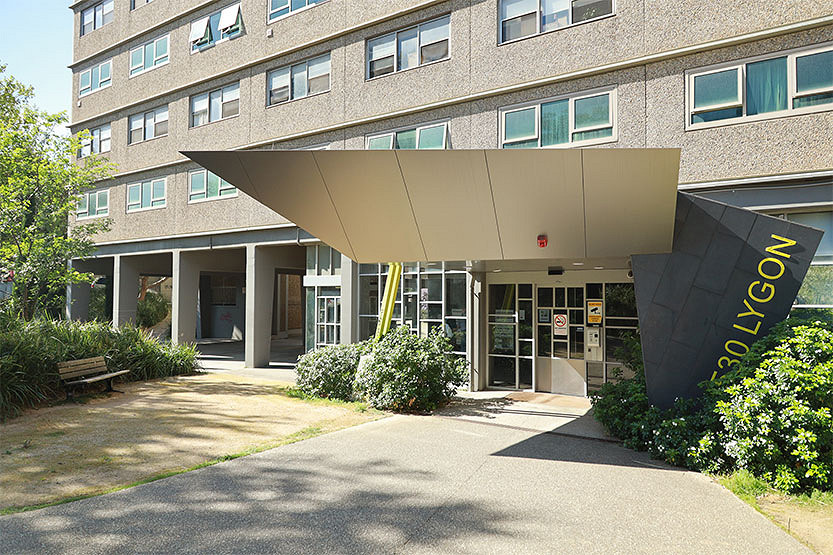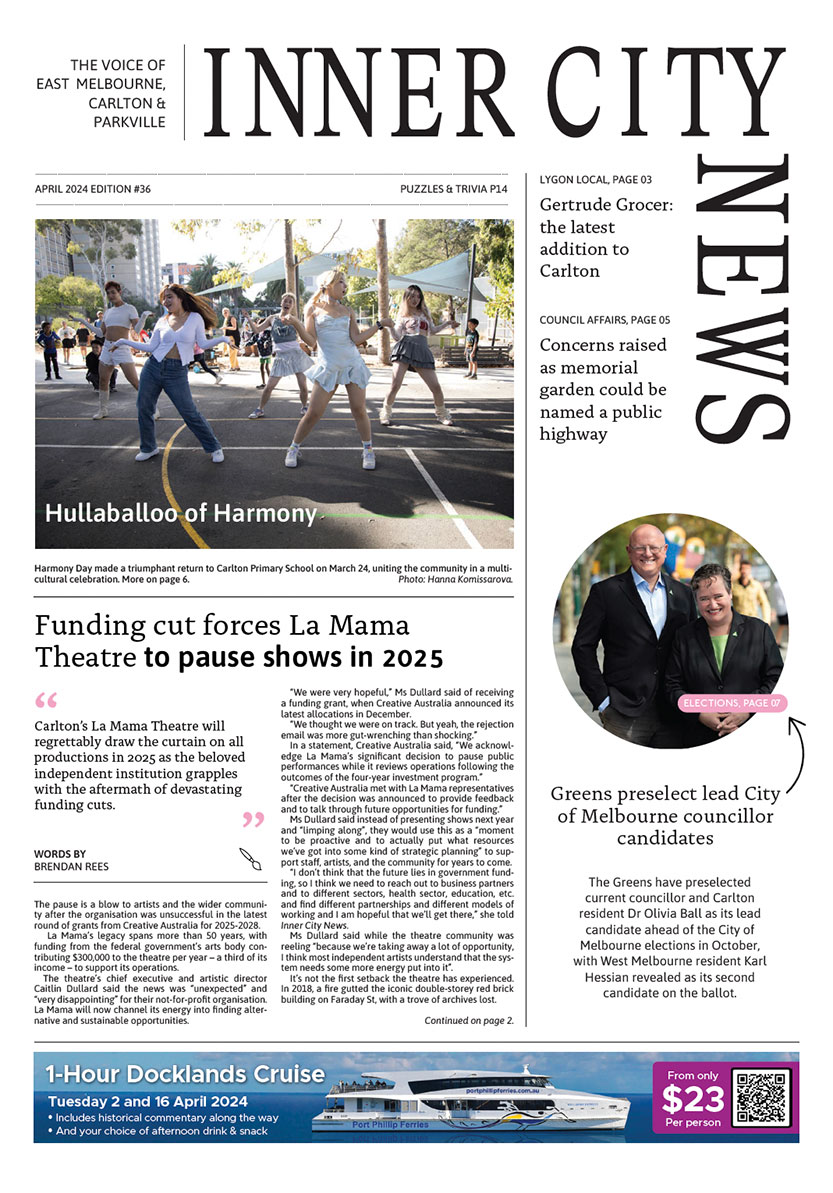Barak Beacon public housing estate in Port Melbourne
Homes Victoria now have an office on the estate with a revolving door of relocation workers. Residents are getting invitations put under their front doors to come and have a chat. The chat participation rate is very, very low.
A radio interview by Fiona York from Housing for the Aged Action Group (HAAG) about public housing resident Ms Kelly’s story is clear and compelling. Homes Victoria is not being truthful about the status of the buildings. They have no structural problems and are very much matched to residents’ needs.
Ms Kelly wrote to Port Phillip local councillors requesting their consideration of the estate having local heritage status, with the following key points being made.
The Barak Beacon Road public housing estate was built as an extension of the Garden City estate which is currently covered by Heritage Overlay 2. Before the estate was built, the land had been abandoned since the end of World War II.
“The Port Melbourne City Council, with particular efforts from Councillor Archie Todd, lobbied from 1955 onward for an extension of the Garden City estate to be built on the land. They finally succeeded with submissions in 1972 to the Minister of Lands, by both the Council and the Fishermans Bend Productivity Group, the latter saying they would be forced to move their industries if more housing was not built. The land was rezoned as residential in 1973. The estate was opened on June 18, 1982.”
“Most of Garden City is now in private hands, and the traditional residents have been forced to move out by the sharply escalating housing prices of the last 20 years. The Barak Beacon Road estate represents the last affordable housing in this area.”
“The construction is of exposed concrete, with metal window frames and tiled roofs. The design uses a range of heights in the different blocks with attractive lines created by the balconies, broken up by external staircases.”
“No block is exactly the same, so your eyes move from detail to detail, giving a sense of greater space. Each block has two units on the ground floor built on one level. Every unit has either a courtyard or balcony.”
“The units for each street number are built around a grassed courtyard, which gives children a place to play and tenants a place to meet. It divides the estate into a series of small communities, making it a pleasant, peaceful place to live.”
I met another older resident at Barak Beacon at a meeting of a group I am involved with. She was in tears over what is happening to her. Completely distraught and fearful of where she may have to move to, away from decades-long friends and support networks.
Public housing is essential for delivering secure affordable homes to a very large number of older citizens in Victoria.
Pitching to some voters but not solve the housing crisis
Premier Andrews had to ditch his “social housing” levy on developers and the ending of rates payments to local councils for public and community housing. Councils, rightfully, were opposed to the proposed loss of payments for services they were expected to keep on delivering. Developers had been promised billions of dollars of additional profit opportunities, but they reneged on a deal the Premier thought he had with them. An attempted balancing act of marginal value in solving our housing crisis fell over after pressure from the very profiteers who have created it.
Soon after the dumping of the plan, the Premier made a fantastic commitment to establish sick pay for gig economy workers- most of whom are young people. The Guardian covered the announcement on March 19 and the same article reported on the generational divide when it comes to voter support for Andrews.
A recent Roy Morgan poll shows a large majority, 75 per cent, of young Victorians aged under 35 approve of how he is doing his job. The approval rate declines with age; 62.5 per cent of those aged 35 to 49 and 61 per cent of the 50 to 64 age group, while this drops to only 55 per cent of people aged 65 and older.
Pitching to young voters, the Premier went straight to brand new messaging on affordable housing, inferring that the great Australian dream of owning a home is less important to younger generations:
[In an exclusive interview with The Guardian Mr Andrews said] “Not everyone has intergenerational wealth or the ability to act like a bank. So, this is a really significant challenge. We’re always talking about the great Australian dream, absolutely. But I get a sense, I’ve talked to my kids and their friends, they’re much more focused on perhaps living where they want to live, and ownership is not such a big thing. They are happy to rent with secure terms.”
He was derided in the Herald Sun and other media.
Premier Andrews’ new mantra is precisely what the Public Housing Renewal Program/Big Housing Build is about in relation to public housing. Demolished public housing estates are being redeveloped to have community and private rental homes, with the private to be a mixture of full and slightly discounted market rents.
Private Build-to-Rent projects are also being subsidised by the state government with land tax concessions to global private investors with no transparency on the rents that will be charged in exchange for the concessions.
A reality check on the “dream”: Victoria’s waiting list. Data on the state’s waiting list published recently tell us the numbers continue to rise. At the end of December there were 54,587 households, estimated to be around 118,600 people (83,200 adults and 35,400 children) on the waiting list. An increase of 11 per cent over 2021. Priority access households up by 17 per cent to 30,554.
Pitching for young people’s votes with a program that will rely on private developers to deliver affordable, secure housing where they want to live is an unrealisable dream of the state government. It is ageist and ignores the desperate circumstances of all those who are on the waiting list •

Carlton language school championed by Ukrainian refugee






 Download the Latest Edition
Download the Latest Edition